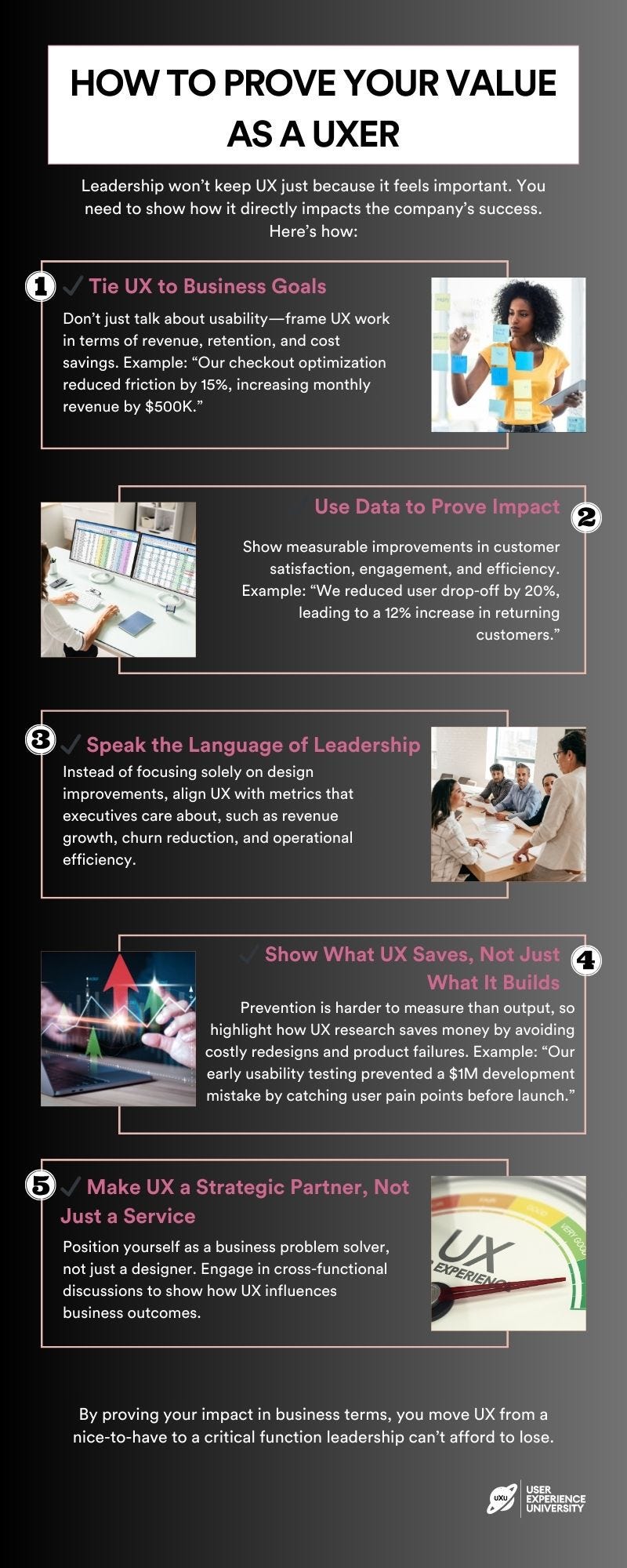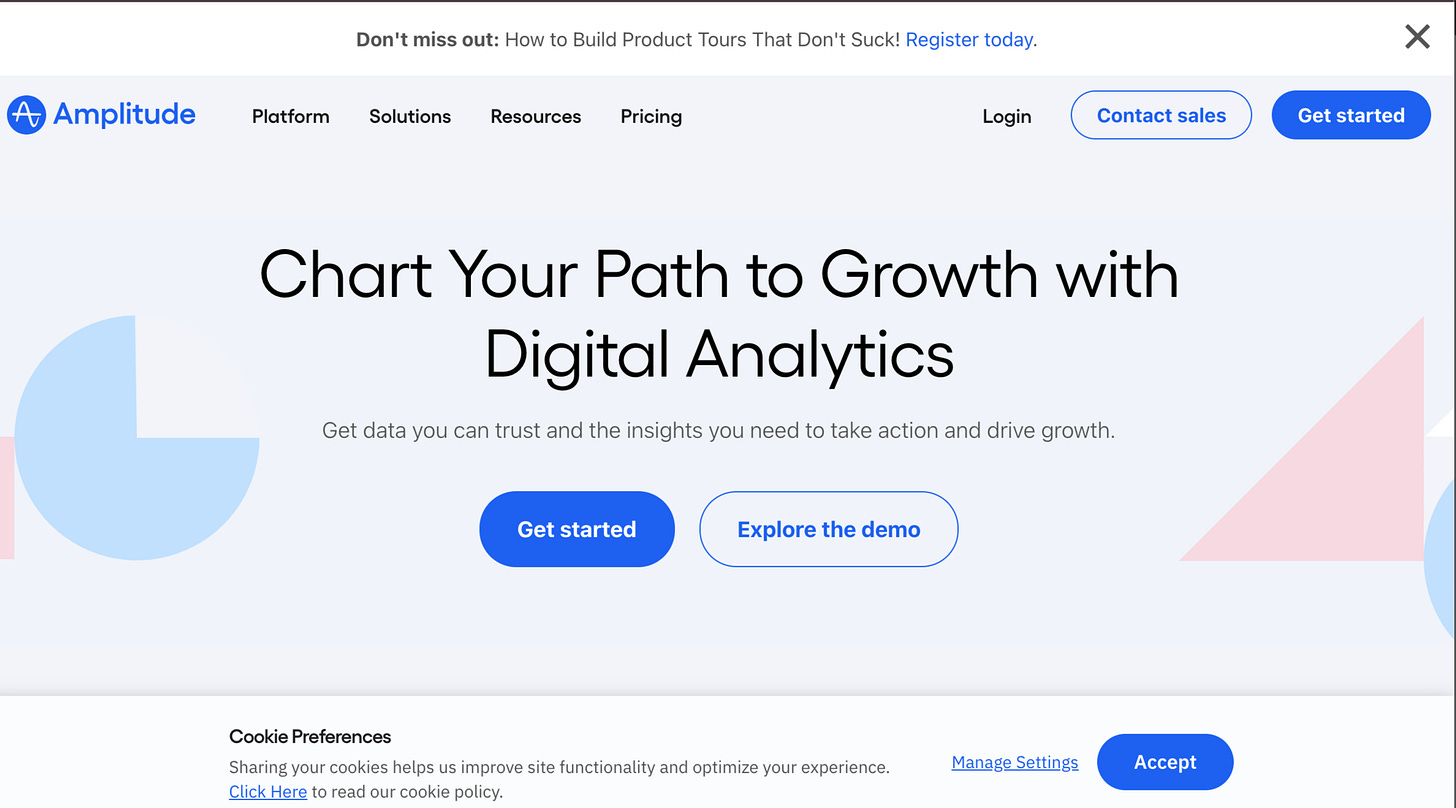Are UX Layoffs Inevitable, or Are We Doing Something Wrong?
Why is UX always the first to go?
Why is UX always the first to go?
It’s a question that keeps resurfacing. Another round of layoffs, another wave of UXers posting “I was impacted.” But here’s the real question: Why does this keep happening—again and again?
Some say UX is undervalued. Others argue companies just don’t see the business impact. And then there’s the growing reality—many companies are shifting resources to product managers and engineers, seeing UX as “nice to have,” not a necessity.
So, is UX really at risk, or is this an opportunity to adapt? Today, we’re breaking it all down—the reasons behind the layoffs, the shifts happening in the industry, and how UXers can stay ahead of the curve.
Key Insight: UX Isn’t Being Cut—It’s Being Absorbed
Harsh Truth: Why UX Is Always First on the Chopping Block
What’s Happening to UX Hiring? The Data Tells a Different Story
Adaptation Strategies: How UX Professionals Can Stay Relevant
How to Prove Your Value as a UXer: Positioning Yourself as Indispensable in Your Organization
Community Take: “If UX Is So Valuable, Why Are We Still Defending It?”
Workshop: How to Build an Efficient Design Workflow
Resource Corner: Must-Reads to Stay Ahead of the Curve
Tool of the Week: Amplitude – AI-Driven Product Analytics
Key Insight: UX Isn’t Being Cut—It’s Being Absorbed
Layoffs tell part of the story. The rest? UX work is still happening—it’s just shifting into different hands.
Companies aren’t saying, “We don’t need UX.” They’re saying:
“Product managers can handle the research.”
“Engineers can build based on best practices.”
“AI can generate usability recommendations.”
A 2024 industry report found that 47% of companies that laid off UX staff reassigned design responsibilities to product teams. (Source)
This isn’t just a short-term reaction. It’s a shift in how UX is viewed, structured, and executed.
🛑 Why UX Is Always First on the Chopping Block
1️⃣ UX Doesn’t Have a Clear Profit Narrative
Companies don’t cut revenue-generating roles first. When budgets tighten, leadership looks at what’s making money and what isn’t.
Sales? Essential. They bring in revenue.
Engineering? Critical. They build the product.
UX? …It depends on who you ask.
A Forrester report from 2024 found that 64% of B2B marketing leaders don’t trust their organization’s marketing measurement for decision-making. (Source) If leadership doesn’t see the direct financial impact, UX becomes an easy target.
2️⃣ AI and Automation Are Changing UX Work
Companies are investing in AI-driven UX tools that can:
Run automated usability tests
Generate A/B testing insights
Recommend design solutions
This isn’t about replacing UX entirely. It’s about companies questioning how many UX professionals they actually need.
3️⃣ The Role of UX Is Too Broad
Ask 10 UX professionals what UX is, and you’ll get 10 different answers. That’s a problem.
Product managers own strategy.
Engineers own development.
Marketing owns messaging.
Where does UX fit? If leadership doesn’t understand it, they won’t fight to keep it.
📊 What’s Happening to UX Hiring? The Data Tells a Different Story
📉 UX hiring has slowed, but it hasn’t stopped.
Entry-level UX design roles have declined by 71% since 2022. (Source)
UX research roles are shrinking as companies shift to AI-powered insights.
📈 But specialized UX roles are growing.
AI-focused UX designers, UX strategists, and behavioral researchers are in demand.
Companies investing in UX-led growth (like Duolingo, Shopify, and Netflix) are still hiring.
💡 What This Means:
If you’re competing for a generalist UX role, the market is tough. But if you position yourself with specialized UX skills, opportunities are still out there.
💡 Adaptation Strategies: How UX Professionals Can Stay Relevant
The UX industry is evolving. The question is: Are you evolving with it?
1️⃣ Align UX with Business Objectives
Understand Key Performance Indicators (KPIs): Know what metrics matter to your organization and how UX can influence them.
Communicate Value: Regularly present how UX initiatives lead to measurable business outcomes, such as increased conversion rates or customer retention.
2️⃣ Embrace AI and Automation
Learn AI Tools: Familiarize yourself with AI-driven design and research tools that can enhance your workflow.
Stay Updated: Keep abreast of how AI is transforming UX and find ways to integrate these technologies into your skill set.
3️⃣ Specialize in Emerging Fields
Behavioral Design: Understand the psychology behind user decisions to create more engaging experiences.
UX Strategy: Move beyond design to influence product and business strategy through a deep understanding of user needs and market trends.
4️⃣ Continuous Learning and Upskilling
Certifications and Courses: Invest in education that aligns with industry shifts, such as courses in data analytics or AI in UX.
Community Engagement: Participate in UX communities to share knowledge, learn from peers, and stay informed about industry changes.
By proactively adapting, UX professionals can not only secure their positions but also become indispensable assets in their organizations.
💼 How to Prove Your Value as a UXer: Positioning Yourself as Indispensable in Your Organization
🔎 Community Take: “If UX Is So Valuable, Why Are We Still Defending It?”
“Every few months, UXers are scrambling to justify their worth. Other roles don’t have to do this. Maybe the problem isn’t just companies undervaluing UX—maybe UXers need to reposition themselves.”
What do you think? Is UX undervalued, or do UXers need to adapt? Join the discussion here.
Workshop: DesignOps: How to Build an Efficient Design Workflow
If you’re tired of:
❌ Scrambling to keep up with shifting product requirements
❌ Wasting time on handoffs, approvals, and version control nightmares
❌ Feeling like design doesn’t have a real seat at the table
…then this workshop is for you.
We’re breaking down exactly how to:
✅ Streamline collaboration between research, design, product, and dev teams
✅ Stop the endless back-and-forth with clear processes that actually work
✅ Make design a core part of decision-making—not an afterthought
Because great design doesn’t happen in isolation. It happens in a system that works.
You didn’t come this far to keep fixing broken workflows. Take control. Register now.
📚 Resource Corner: Must-Reads to Stay Ahead of the Curve
Book: Designing for AI-Powered Experiences – The future of UX in AI-driven products.
Article: The UX Reckoning: Prepare for 2025 and Beyond by NNGroup.
Article: How to improve UI/UX skills?
Tools: Looppanel: Measure the Value of UX Research [with UX ROI Calculator
🛠️ Tool of the Week: Amplitude – AI-Driven Product Analytics
Key Features:
Behavioral Cohorting: Segment users based on actions to identify patterns and optimize experiences.
Funnel Analysis: Visualize user paths to pinpoint drop-offs and improve conversion rates.
Retention Tracking: Monitor user engagement over time to enhance retention strategies.
AI-Powered Insights: Leverage machine learning to uncover hidden trends and predict user behavior.
Final Thought | UX Needs to Evolve—Or It Will Be Left Behind
UX isn’t disappearing—it’s changing.
The companies eliminating UX roles aren’t eliminating UX thinking—they’re distributing it elsewhere. If we keep fighting to “defend” UX without adapting, we’ll always be at risk.
So the real question isn’t “Why is UX always the first to go?”
It’s “How do we make UX indispensable?”
The answer? By proving our value, speaking the language of business, and evolving with the industry—not reacting to it.






